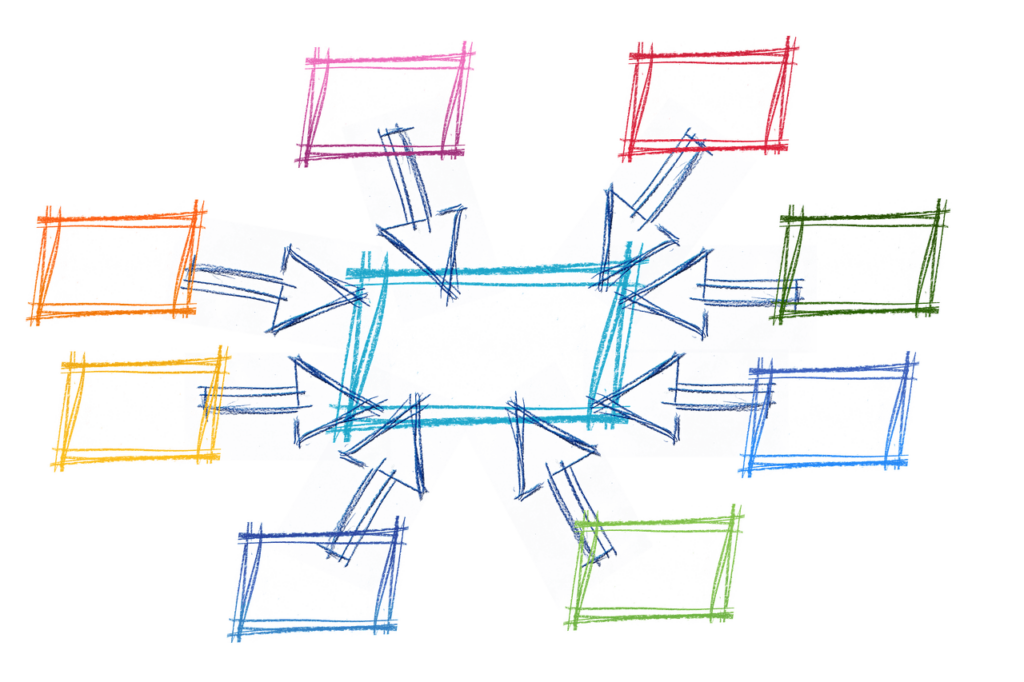Is Your Employee Lifecycle a Broken Circuit?

If you showed a butterfly to someone who’d never seen one before and told them it was once a caterpillar, they probably wouldn’t believe you.
Butterflies look very different to caterpillars, after all. It’s a life-altering transformation for a once-wingless bug.
That transformation is facilitated by the cocoon. It’s a safe space where the creepy crawly can sprout wings and gather strength. You wouldn’t judge a caterpillar on its ability to fly, and yet, those are the perfect parameters to judge a butterfly by.
Employees are likely to experience many cocoon moments throughout their lifecycle at your company. Just because they aren’t bundled up in chrysalis layers, doesn’t mean they aren’t undergoing rapid transformation.
Their needs will change as their place within the company changes. An employee who’s recently onboarded might need extra training on a new project management system. A newly promoted manager might need a mentor from the senior leadership team, who can help them through the early days of big decision-making.
Whatever stage individuals find themselves at, one thing is certain: employers need to know where their employees are in their lifecycles if they want to help them spread their wings.
Defining the Employee Lifecycle
In its simplest form, the employee lifecycle covers every stage of the relationship between the business and the employee, for the duration of their employment. From the moment you attract them to your job vacancy, to their departure from the company. Technically, you could also include their actions as ex-employees, which will continue to influence your business after they leave.
The consensus is that there are at least six stages: Attraction, Recruitment, Onboarding, Development, Retention, and Exit. Here’s a quick overview:
Attraction
Let’s put your finely-tuned employer brand to work. If you want the best talent, you need the best pitch (and the substance to back it up). Much like the candidate considers what they have to offer the business, you too must consider what you’re offering the candidate as an employer. (Aside from a paycheck – this isn’t enough by itself).

Recruitment
This is a candidate’s transition from applicant to a potential employee. Great candidate experience counts for everything here. Frequent communication is key, timely interview scheduling, and opportunities to interact with the business ahead of accepting a job will ensure they integrate into the business.
Onboarding
Time to make new employees feel like part of the furniture. Share your brand values, facilitate communication and relationships with existing employees, and make sure you demonstrate their place within the bigger picture. Share your mission and invite employees to define their contribution to it.
Development
According to a study by Udemy, 42% of people say learning and development is the most important company benefit, aside from salary. If their only opportunity to develop at your company is in the first few weeks of employment, don’t expect them to last beyond a few months. Development doesn’t need to be institutional; lateral movement through the business can be extremely useful for learning new skills.
Retention: Want to know how your talented employees feel about their jobs? Ask them. If you’ve handled the previous stages properly, you’ll already have an empathetic relationship with them, where you can ask them about their needs. Remember: Employees quit bosses, not just jobs.
Exit: Not as final as it sounds. Employees retire, switch careers, are made redundant, or leave for personal circumstances. The breakup between employer and employee can either enhance the relationship or spoil it for good. Ex-employees can be your biggest allies; sharing their positive stories and encouraging talented friends to apply for your roles.
Understand, Map and Measure
We already know how impactful positive employee experience is in all aspects of the business. Understanding what stage your employees are at is critical to extending their time with your company and enhancing the employee experience.
If you can identify what their needs will be at different stages, you can design systems, infrastructure, and culture that serve these needs and enhance their experience. And by doing so, level up their contribution.
If employees are disengaging or dropping off once they reach the 12-month mark, consider how your offering changes over that period. Employers often focus all their attention on the first few weeks, and bombard recruits with training and opportunities, only for it to dissipate once onboarding is over. You’d probably feel abandoned too if that attentiveness disappeared overnight.
Applying this level of detail to every individual employee isn’t easy. You need a wide range of platforms to create a digital trail and trace how an employee moves through the business. Companies that rely solely on technological solutions to their problems are often accused of removing humans from the process. But what if technology was used to facilitate empathetic relationships instead of getting in the way of them?

Trace an employee’s educational path in the ATS, and you’ll be able to offer training that speaks to their skillset. Sync calendars, and you’ll never make the mistake of asking an employee to complete something while they’re on annual leave. Can you see how tech enhances relationships?
Of course, blind spots in the employee lifecycle can also be alleviated through collaboration across the organisation. HR leaders who are responsible for designing rewards, benefits, and opportunities for employees need to know what the individual needs at each specific stage. You can only figure that out by stepping into their shoes and asking the right questions.
The consequence of not understanding, mapping, and monitoring the employee lifecycle is losing talent before it’s been properly utilised. Brilliant assistants never make it to the executive level because no one provided a clear pathway for them to develop. The talent companies work so hard to identify can disappear quickly as a flash.
Talented employees who arrive at your company bursting with energy can quickly be drained by an unsupportive culture and lack of opportunity. Talent takes maintenance, with the individual and the company both playing their part.
Building a clear timeline of the employee lifecycle is particularly useful now working hours are flexible and borders are no longer a limitation. Our sense of time has been eroded by the pandemic, so having a timeline of activities for employees at each stage can help HR teams provide infrastructure, benefits, and opportunities at just the right time.
The Circuit Breaker
Cast your mind back to school science lessons. Handed a bunch of components, you were asked to make a circuit, complete with transistors and bulbs, switches and a battery. Unconnected, nothing much happens. Connected with wires to a power source, and you have light. Disconnect one vital component and the circuit breaks.

Employers who manage their employees through a range of disconnected tools break the employee lifecycle circuit. They miss insights, by failing to compile the data from different sources. It’s a broken circuit and yet they’re still going around in circles. What’s needed is one central database for employee data, with all the app integrations a company could ask for.
When we consider the length of an employee lifecycle – which is often years and years – so much technological innovation and personal growth are possible. Employees learn new skills, take on new roles, and see their jobs change drastically. Jobs that were once held by people are now handled by robots.
Without a central system to connect those stages, the employee lifecycle remains a mystery. You might have oversight of a few aspects, without the holistic overview that can guide decision-making.
But when employees start dropping off at the 6-month mark, and you don’t have the data to pinpoint why that is, there’s no way of knowing which parts of the employee lifecycle need repairing.
The Single Source of Truth
The circuit of tools and systems that help teams understand, map, and manage the employee lifecycle poses a unique challenge. As helpful as they can be, the same tools that provide visibility in certain areas can cloud vision in others when you’re trying to Track behaviour across multiple platforms.
Without the wires between each component, they’re just a bunch of disconnected parts. It’s only once you get them working together, that the light switches on.
Businesses that utilise a range of tools to measure and manage their employee lifecycle have taken the first step towards a healthy employee management strategy. But the work doesn’t end there.
All the information should be organised in one central system, which links apps and programs in a way that makes information comparable and useable. This brings clarity and visibility to employees’ working lives. Businesses can then pinpoint which stage employees are most likely to disengage at and mitigate that risk before it comes to fruition.

Having a single source for employee information means the insights are reliable, always accurate, and easy to read. HR teams can make consistent progress on their employee lifecycle strategy, by using employee information that is relevant, timely, and sourced from the systems and apps teams use on a day-to-day basis.
HRLocker enables businesses to truly visualise an employee’s path through the company. HR teams can use these insights to build new systems and processes influenced by real-world experience, with evidence that comes directly from employees’ working lives.
Your team is already telling you everything you need to know to enhance the employee lifecycle. The question is, how are you using their answers?
How to Manage Your Employee Lifecycle Using HRLocker Free Webinar
The employee lifecycle is a framework that HR uses to help employees progress during their time with an organisation. It’s an excellent way for employees to engage with their employers at different points in their careers. It typically has 6 steps, recruitment & onboarding, training & development, performance management and offboarding or separation.
This live webinar will show you how HRLocker can help you manage the entire employee lifecycle in your organisation, and enable you to focus on the things that matter most, your people.

